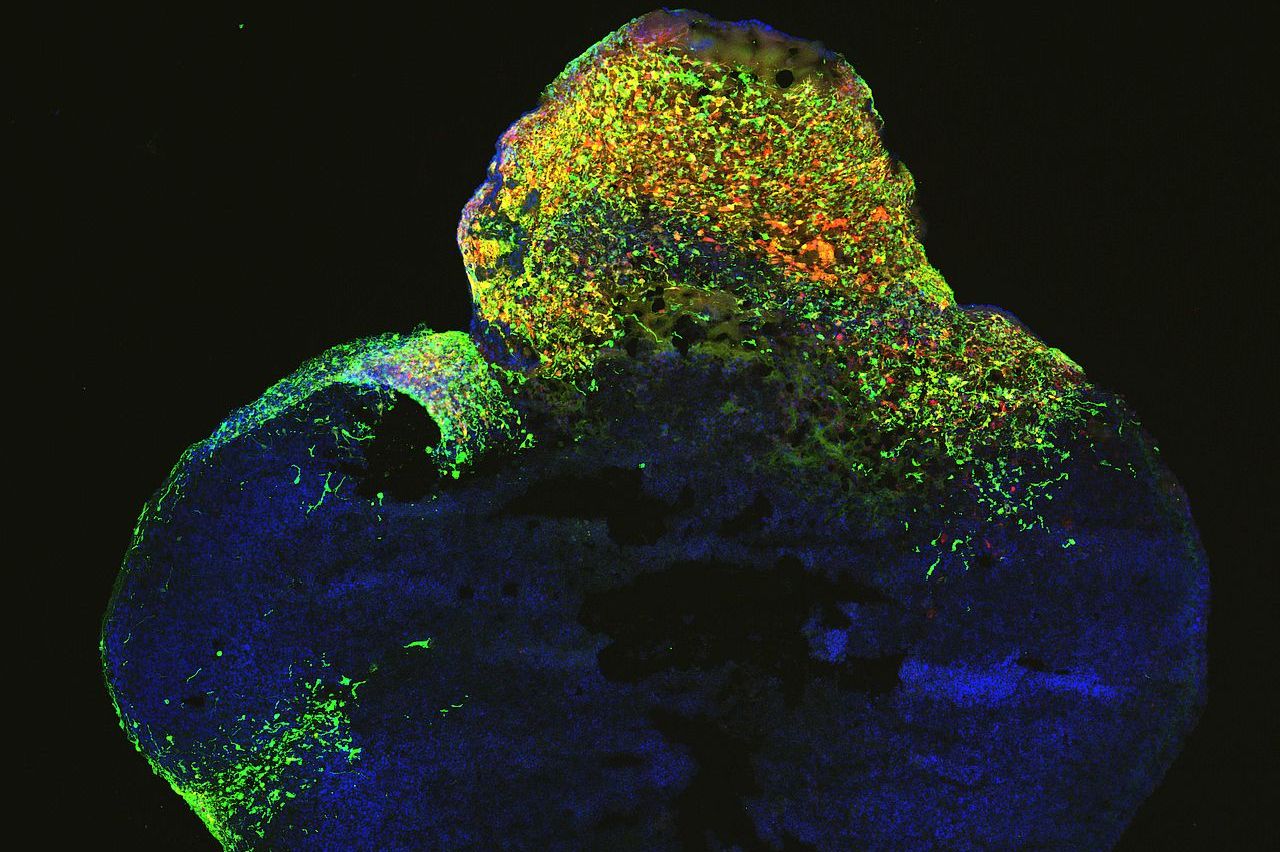
(Vienna, 30 October 2020) Researchers from the laboratory of Jürgen Knoblich at IMBA – Institute of Molecular Biotechnology of the Austrian Academy of Sciences – developed CRISPR-LICHT, a revolutionary technology that allows genetic screens in human tissues such as brain organoids. By applying the novel technology to brain organoids, the ER-stress pathway was identified to play a major role in regulating the size of the human brain. The results are published in the renowned journal Science.
Many of the fundamental principles in biology and essentially all pathways regulating development were identified in so-called genetics screens. Originally pioneered in the fruit fly Drosophila and the nematode C. elegans, genetic screens involve inactivation of many genes one by one. By analyzing the consequences of gene loss, scientists can draw conclusions about its function. This way, for example, all genes required for formation of a brain can be identified.
Genetic screens can routinely be carried out in flies and worms. In humans, a wealth of knowledge exists about genetic disorders and the consequences of disease-relevant mutations, but their systematic analysis was impossible. Now, the Knoblich lab at IMBA has developed a groundbreaking technique allowing hundreds of genes to be analyzed in parallel in human tissue. They named the new technology CRISPR-LICHT and published their findings in the journal Science.
By using cerebral organoids, a 3D cell culture model for the human brain developed in Jürgen Knoblich’s group at IMBA, hundreds of mutations can now be analyzed for their role in the human brain using CRISPR-LICHT.
“The basis of the technique is a combination of the well-known CRISPR-Cas9 technology, which was awarded the Nobel Prize in October 2020, and a dual-barcoding method. The key trick was to apply a guide RNA, but also a genetic barcode, a piece of DNA that we add to the genome of the cells we use to grow organoids. This allows us to see the entire cell lineage of each organoid, while a second barcode lets us to count the number of cells generated by each starting cell. This reduces noise and so we can determine the effect of each guide RNA on the number of cells produced during organoid growth. To describe our approach, we termed the method CRIPSR-Lineage Tracing at Cellular resolution in Heterogenous Tissue (CRISPR-LICHT)”, explains co-first author Dominik Lindenhofer, PhD student at IMBA.
Link to IMBA release
Original publication
Esk, Lindenhofer et al. “A human tissue screen identifies a regulator of ER secretion as a brain size determinant”. Science, 2020.